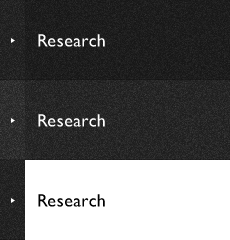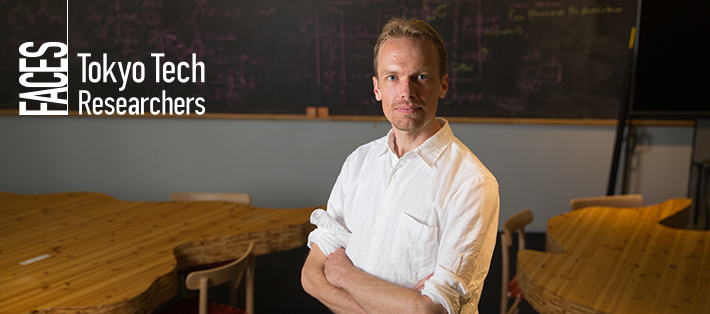
Issue 26
Associate ProfessorShawn McGlynn
Earth-Life Science Institute
Five years on from its inception, the Earth-Life Science Institute (ELSI) of Tokyo Tech — launched as part of Japan's government-funded World Premier International (WPI) Research Center Initiative — continues to grow and attract experts in fields ranging from biology, chemistry, and geology to astronomy and space science. Their shared goal is to understand how Earth was formed and how life began. Shawn McGlynn joined ELSI as an associate professor in 2016, specializing in the field of microbial biogeochemistry. He tells us more about his research, his love of Japanese hot springs, and how to get involved in activities at ELSI.
An interdisciplinary quest
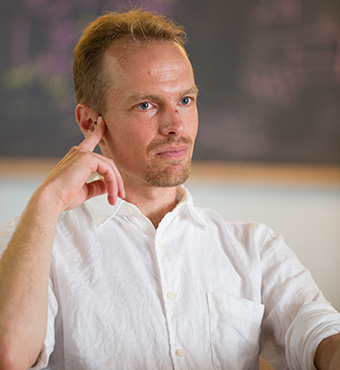
What is your main area of research?
My basic area of research is the origin and evolution of life. At ELSI, I am able to span a large area of research. Some of the research I am conducting is entirely chemical, but we go all the way from pure chemistry to modern-day microbial ecology and big-picture biological studies. My role here at ELSI involves bridging chemistry and biology in order to understand how life works and how it started.
From a microbiology perspective, I think right now is one of the most exciting times because what has been discovered in recent years is that the vast majority of microbial life on Earth has not been directly observed yet. We are not even sure what the total amount of diversity on the planet is: we don't know just how much we don't know. It is a time of great exploration and that is why laboratory studies and field expeditions are both extremely valuable for understanding how life works today and how life affects the geochemical cycles of the planet we are living on, as well as for thinking about what types of life were present in the past.
What types of projects are you working on, and what kinds of collaborations are important in your studies?
At the end of August, I was co-leader of an expedition to a hydrothermal vent1 in Iceland. This involved working in a diverse team that includes colleagues from ELSI, the Japan Agency for Marine-Earth Science and Technology, and universities in the US. Together, what we will be able to do is answer a whole suite of questions relating to geochemistry, microbiology, and diversity — all from just one expedition. This hydrothermal vent — an alkaline hot spring — is only about 20 meters below sea level. You can swim to it. By recovering microbes and investigating how they live, our study will help not only to supplement our knowledge of current biological diversity but also to reflect on what types of life may have been on the planet in the past.
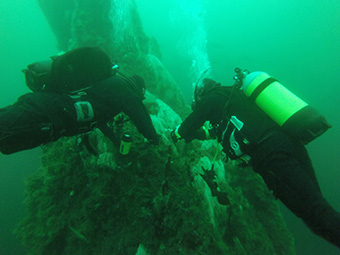
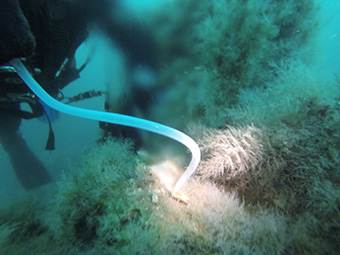
The Strytan hydrothermal vent, which may be similar to vents where life may have started.
Photos courtesy of Donato Giovannelli / @d_giovannelli
Twitter: #StrytanExpedition
In my collaboration with Ryuhei Nakamura at ELSI, we are both interested in understanding how energy flow can structure and organize material. That is the biggest question all of my research falls under: How is material organized by energy flow? While Ryuhei approaches this question from the perspective of electron transfer and catalysis, I utilize a mixture of chemistry and biology. By working together, he is able to add a precise electrochemical and material science, and a catalysis perspective to my more biochemical understanding, and vice versa.

Iron-reducing organisms that transfer electrons from metabolic processes to iron or other bacteria in anaerobic conditions
How far is it possible to know about the origin of life by studying present-day life on Earth?
In a similar way that we don't yet know the current microbial biodiversity of the planet, we don't yet know what the first forms of life were like. Even if we discover all the types of life on the planet and we have perfect knowledge about how they work, that doesn't guarantee us the ability to accurately comment on how it started. This is because, as far as we know, life has been on the planet for around 4 billion years. It is a long time. We don't know at which point in time during those 4 billion years the current tips of the tree of life2 originated. Even by using a phylogenetic approach or looking at the last common ancestor of all life on the planet, there is no guarantee that that form of life started 4 billion years ago — it could have been much later and we don't know if there were some or many other types of life before the type of life we have right now. This makes it a truly challenging problem.
What are your next research goals?
One of my aims is to understand the nature of electron transfer between individual cells. A couple of years ago, we discovered what we think is a new mechanism of archaeal3-bacterial electron exchange. We have a strong hypothesis but we haven't conclusively demonstrated that it is correct.
We are also starting a large project to investigate a class of compounds known as thioesters4 for the origin of life. In collaboration with a number of groups in the US, we are starting a project supported by the National Science Foundation to investigate the geochemistry of ancient thioester chemistry on Earth. We will try to collect the oldest rocks we can find, the oldest minerals in the form of zircons5 and look for signals of these compounds. We will also do laboratory experiments and explore the chemistry in more depth. In the group at Tokyo Tech, we will do a combination of protein catalysis, evolution, and metal sulfide catalysis experiments. By covering this ground, we might be able to learn about some of the first biopolymers and what they were capable of energetically. Integrating this with the other team members' expertise is truly a great opportunity.
Another component of my research is exploring the microbial diversity of Japanese hot springs (onsen), for example, at study locations in Nagano and Niijima. When I came here, I realized quickly because I like going to onsen that the diversity of water chemistry in Japan is immense. From a microbial ecology viewpoint, this is enormously helpful because it means we can look at how chemistry is related to biodiversity relatively easily. We are focusing on a set of hot springs that are similar to what the ancient oceans might have been like. They are full of iron and carbonates, maybe similar to the early oceans. Discovering what types of organisms live there is fascinating and helps us reflect on past ecology with greater certainty.
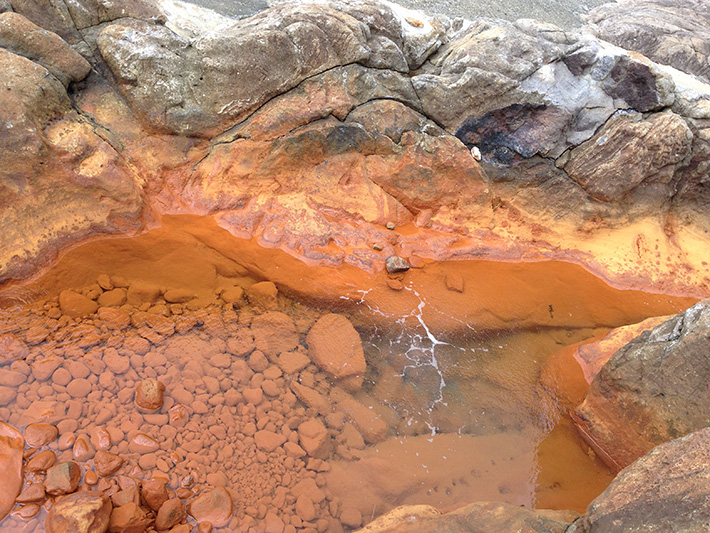
Iron-rich hot spring that may be similar to past locations on Earth (Jinata hot spring on Shikinejima)
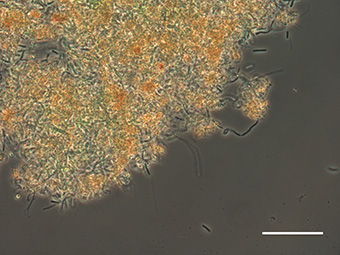
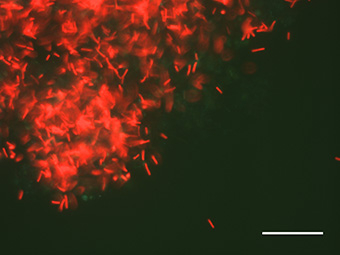
Close relationships between cells and minerals from an iron oxide environment. On the left, an image of iron oxides, and on the right, red cells can be seen.
Scale bar: 10 microns
Photos courtesy of Airi Idei
A one-of-a-kind institute
When did you come to ELSI?
I had the opportunity to join ELSI in April 2016. I had heard about ELSI from Joe Kirschvink, a professor at Caltech and ELSI, who invited me to meet with Yuichiro Ueno who is an ELSI PI. Now Yuichiro and I collaborate on a project to relate enzymes and isotopes, and it was at this first meeting at ELSI where I realized quickly that I could form meaningful collaborations here and work together towards common goals with diverse expertise. It's an amazing research environment.
In your view, what makes ELSI unique?
The range of disciplines inside this institute — to my knowledge, there is nothing else as diverse as this in one single institute. ELSI has a strong connection with Europe and the US, where many of the overseas faculty have come from. Bringing together such a vast amount of expertise, we are able to ask three tough questions: How did the Earth and planets begin? How did life begin? and now with support through the EON project6 — How did consciousness begin? With the opportunities made possible by the WPI program, we are free to be as creative as possible and that is unique. Years ago, I received some good advice from a mentor of mine. He said I should always make sure I am not the smartest person in the room. I think that advice is perfect. Here at ELSI, I can always challenge myself by interacting with great minds and that means I can learn something every day from people around me, and this helps me carry out more productive experiments.
One feature of this institute is that we have two large open spaces called the Lounge and the Agora. These open spaces make a huge difference because they encourage people to run into each other casually. Even when just stopping by for a coffee, oftentimes we exchange papers or ideas, and those times we have together can be very important. This constant knowledge sharing makes me feel like I am in the right place intellectually here at ELSI.
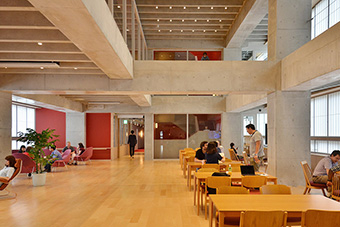
ELSI AGORA — 2nd-floor gathering space
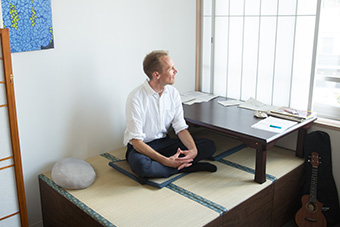
Creative space
How can people get involved in activities at ELSI?
We hold the ELSI Symposium every year, which is open by application. We also have public lectures then, and in general, seminars are open to all who would like to attend. The next symposium, Building Bridges from Earth to Life , will be held from January 9 to 11, 2018. Right now, ELSI is in a spectacular position because we have a budget to fund students and researchers to attend, and they also have the opportunity to stay around after the conference.
, will be held from January 9 to 11, 2018. Right now, ELSI is in a spectacular position because we have a budget to fund students and researchers to attend, and they also have the opportunity to stay around after the conference.
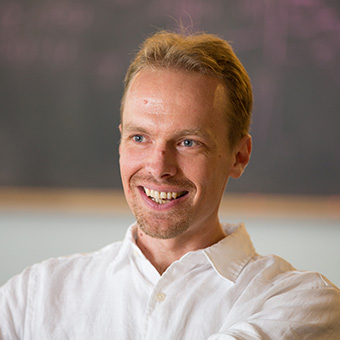
This year we are launching the EON-ELSI Winter School , a two-week opportunity for students to learn about the geology of Japan and tour the Izu Peninsula, an area known for its hot springs and also some geological sites of interest. As chair of the organizing committee, I can say that we also have funding for students to come and join that school. NASA has hosted a series of astrobiology summer and winter schools for many years, and there's one offered by the Nordic Network of Astrobiology. We are trying to create an Asian counterpart. It is completely international — we strongly welcome Japanese students as well as other students from anywhere in the world.
, a two-week opportunity for students to learn about the geology of Japan and tour the Izu Peninsula, an area known for its hot springs and also some geological sites of interest. As chair of the organizing committee, I can say that we also have funding for students to come and join that school. NASA has hosted a series of astrobiology summer and winter schools for many years, and there's one offered by the Nordic Network of Astrobiology. We are trying to create an Asian counterpart. It is completely international — we strongly welcome Japanese students as well as other students from anywhere in the world.
Finally, what would be your advice to current Tokyo Tech students interested in learning more about ELSI?
For students, just come and visit us! In both of the ELSI buildings, we have large TV screens that scroll through the events taking place. It is easy to learn about all of the interesting talks happening here regularly. Try to learn something new and meet some of the people. I am actually now co-supervising a graduate student who initially stopped by, saw that screen, and asked to join one of our discussions on sulfur chemistry and hydrothermal vents. It's a great example of the success of curiosity. The ELSI website also has a calendar of all of our talks, seminars, and workshops. Everyone is welcome to join us. If you are curious, come on in, because we are too!
of all of our talks, seminars, and workshops. Everyone is welcome to join us. If you are curious, come on in, because we are too!
1 Hydrothermal vent
An underwater fluid flow on the seafloor where water heated by volcanic activity and/or rock water interactions rises
2 Tree of life
A diagram meant to depict the evolutionary relationships between all life forms
3 Archaeal
Relating to or involving Archaea, a group of microbes dramatically different from bacteria and more closely related to eukaryotes
4 Thioesters
Organic compounds containing a carbon-sulfur bond which is unstable in water, of interest to origin-of-life researchers as possible precursors for ATP synthesis (energy production) in early life forms
5 Zircons
The oldest known minerals on Earth consisting of zirconium silicate
6 EON project
The ELSI Origins Network (EON), a cohesive and lasting global network of researchers granted USD5.6 million by the John Templeton Foundation
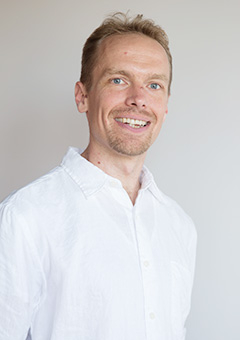
Shawn McGlynn
Profile
- 2016 - presentAssociate Professor, Earth-Life Science Institute (ELSI), Tokyo Institute of Technology
- 2015 - 2016Associate Professor, Department of Biological Sciences, Tokyo Metropolitan University
- 2010 - 2014Postdoctoral Scholar in Geobiology, Division of Geological and Planetary Sciences, California Institute of Technology
- 2006 - 2010PhD in Biochemistry, Montana State University
- 2001 - 2005BS in Chemistry, Montana State University
The Special Topics component of the Tokyo Tech Website shines a spotlight on recent developments in research and education, achievements of its community members, and special events and news from the Institute.
Past features can be viewed in the Special Topics Gallery.
Published: September 2017
. Any information published on this site will be valid in relation to Science Tokyo.















